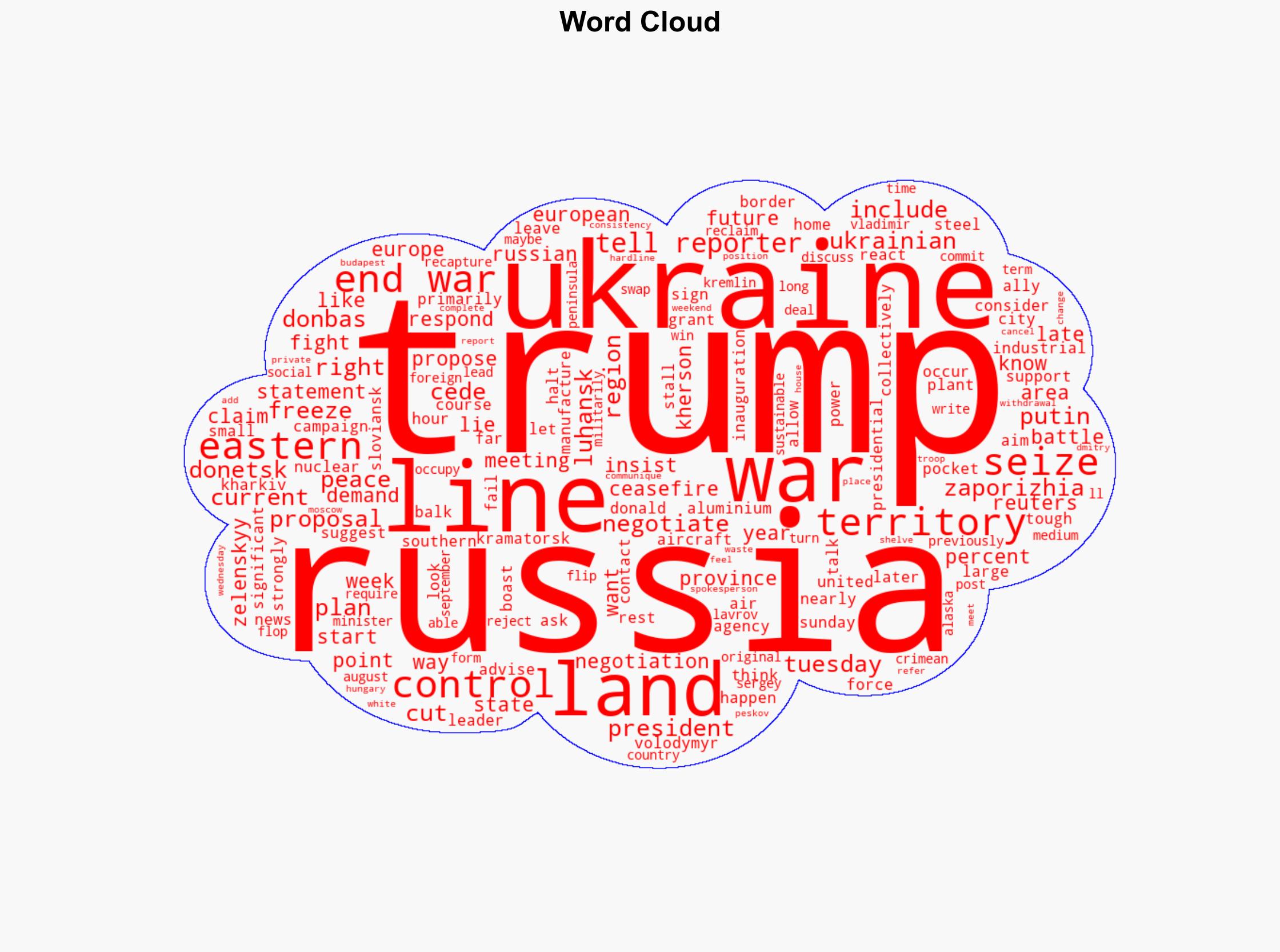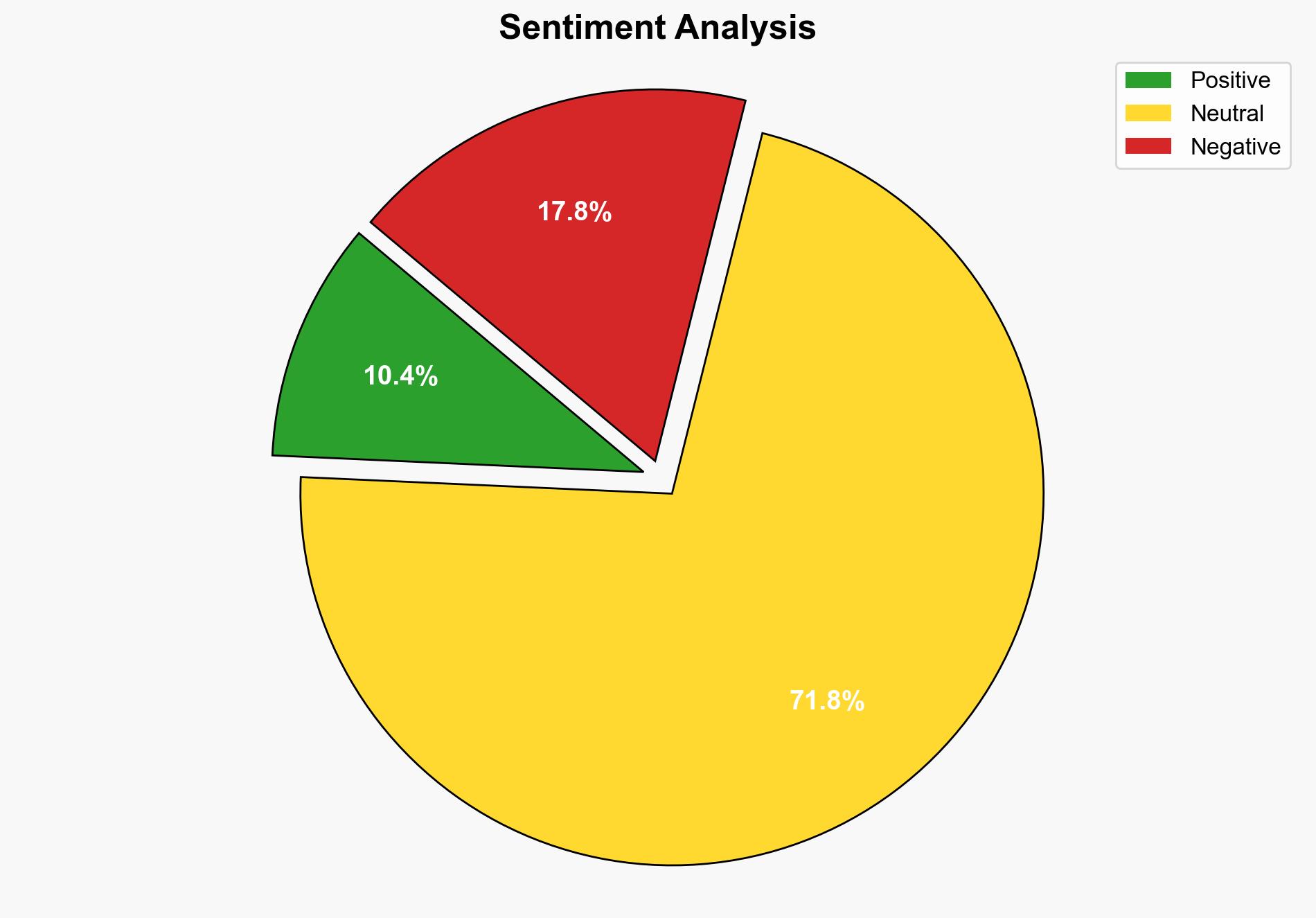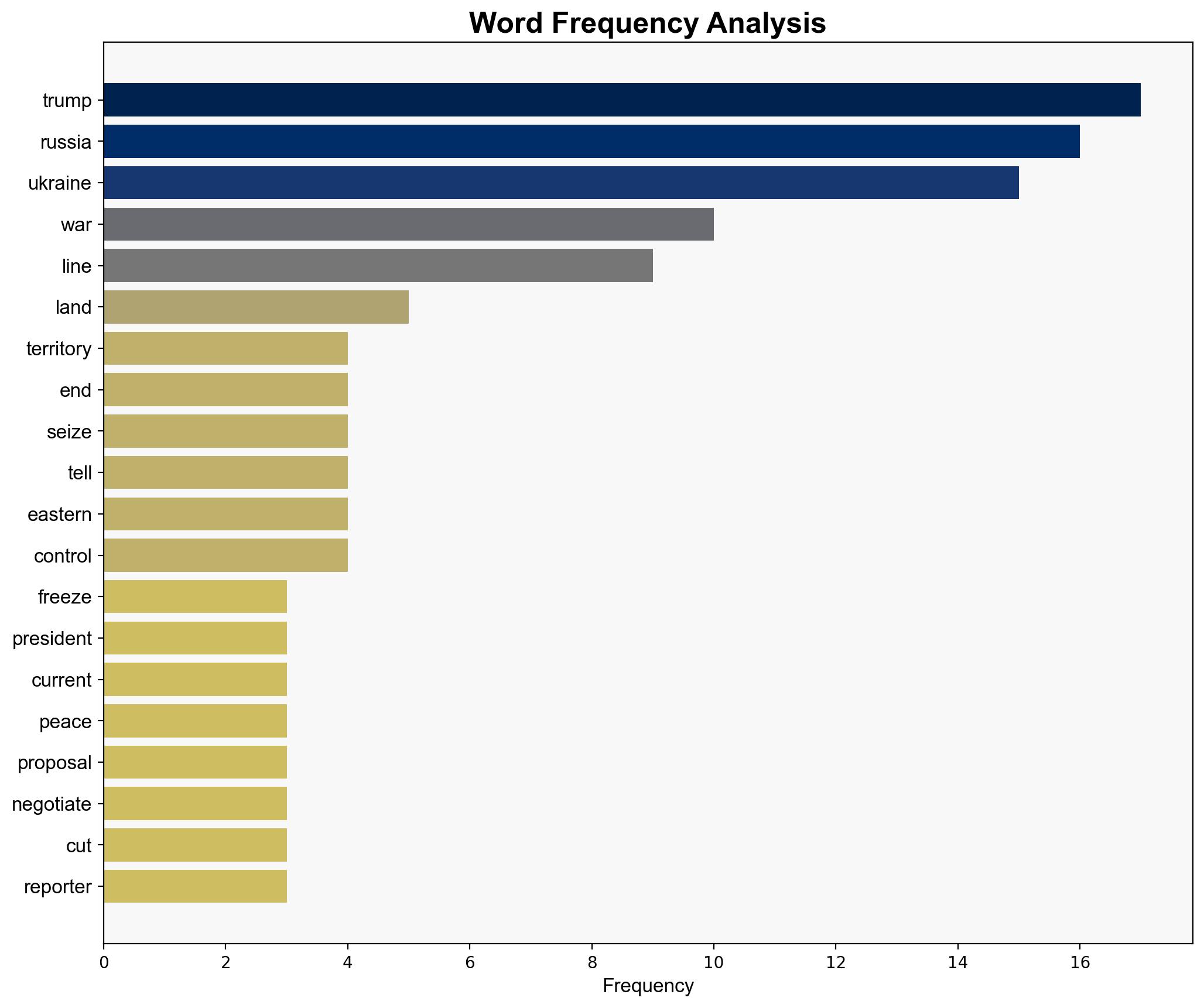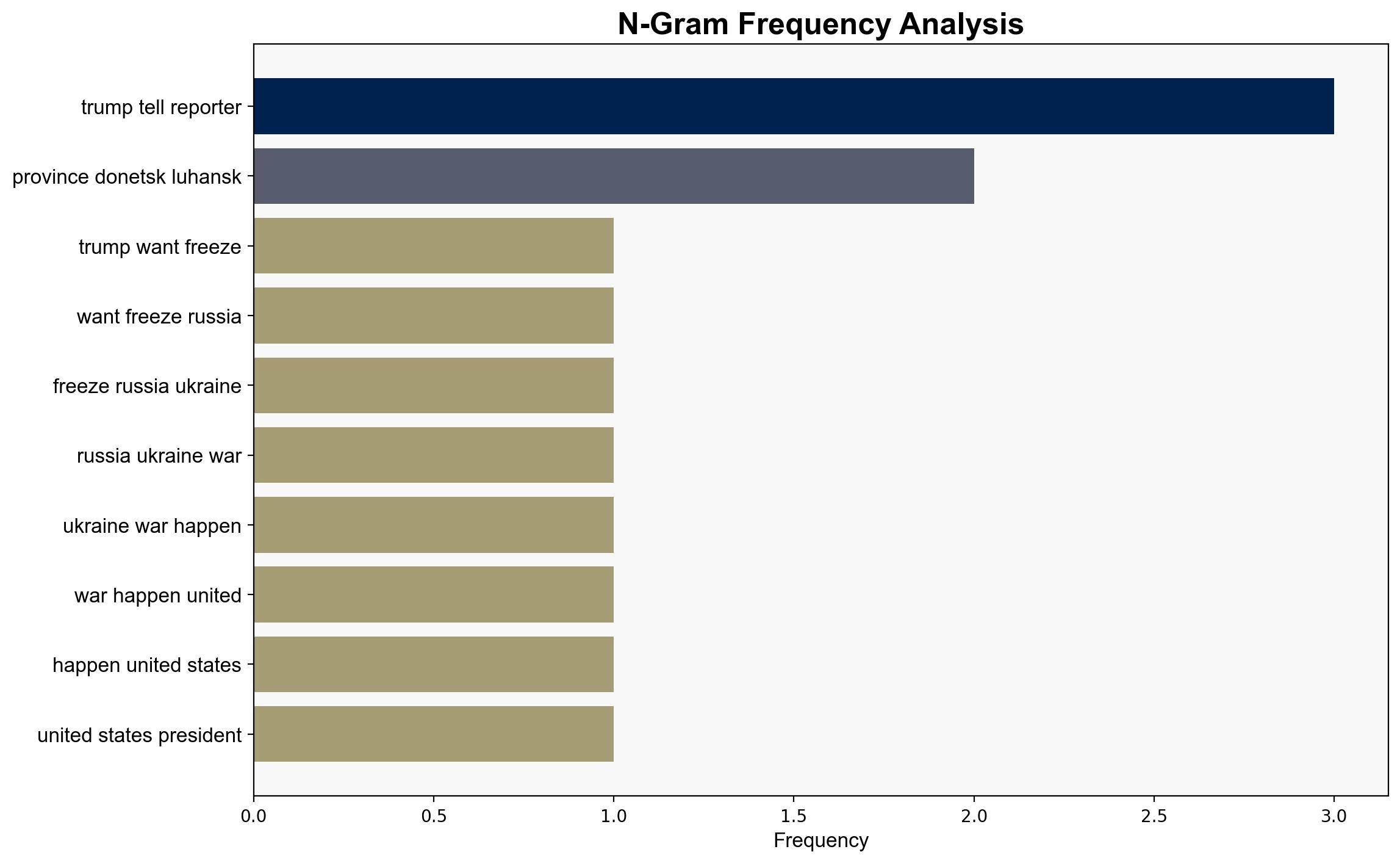Trump wants to freeze Russia-Ukraine war Who gets what if that happens – Al Jazeera English
Published on: 2025-10-24
Intelligence Report: Trump wants to freeze Russia-Ukraine war Who gets what if that happens – Al Jazeera English
1. BLUF (Bottom Line Up Front)
The most supported hypothesis is that Donald Trump’s proposal to freeze the Russia-Ukraine war at current battle lines is primarily a strategic move to position himself as a peace negotiator in his presidential campaign. This hypothesis is supported by his public statements and the geopolitical context. The confidence level in this assessment is moderate due to the complexity of international responses and the potential for rapid changes in the geopolitical landscape. Recommended action includes monitoring diplomatic engagements and preparing for potential shifts in U.S. foreign policy.
2. Competing Hypotheses
1. **Hypothesis A**: Donald Trump’s proposal is a genuine attempt to initiate peace talks and resolve the Russia-Ukraine conflict by freezing the current battle lines as a starting point for negotiations.
2. **Hypothesis B**: The proposal is primarily a political maneuver aimed at bolstering Trump’s image as a peace negotiator for his presidential campaign, with less emphasis on achieving a sustainable peace agreement.
Using the Analysis of Competing Hypotheses (ACH) 2.0, Hypothesis B is better supported. Trump’s historical pattern of making bold statements during campaigns and the lack of concrete diplomatic backing for the proposal suggest a political motive. Additionally, the mixed responses from international stakeholders and the absence of a detailed plan further support this hypothesis.
3. Key Assumptions and Red Flags
– **Assumptions**: It is assumed that Trump’s proposal is taken seriously by international actors and that he has the capacity to influence negotiations. Another assumption is that the current battle lines are a feasible starting point for negotiations.
– **Red Flags**: The lack of support from key international players like Russia and Ukraine, and the absence of a detailed negotiation framework, are significant red flags. Additionally, Trump’s historical inconsistency on foreign policy issues could undermine the proposal’s credibility.
4. Implications and Strategic Risks
The proposal could lead to increased geopolitical tensions if perceived as undermining Ukraine’s territorial integrity. It may also embolden Russia to solidify its control over seized territories. Economically, prolonged uncertainty could impact European energy markets. Cyber threats may escalate as involved parties seek leverage. Psychologically, the proposal might affect public opinion in the U.S. and Europe, influencing future policy decisions.
5. Recommendations and Outlook
- Monitor diplomatic communications between the U.S., Russia, and Ukraine for shifts in negotiation stances.
- Prepare contingency plans for potential escalation in the conflict, including economic sanctions and cyber defense strategies.
- Best-case scenario: Successful initiation of peace talks leading to a ceasefire agreement.
- Worst-case scenario: Breakdown of diplomatic efforts resulting in intensified conflict and regional instability.
- Most likely scenario: Continued diplomatic stalemate with sporadic negotiations and fluctuating tensions.
6. Key Individuals and Entities
– Donald Trump
– Volodymyr Zelenskyy
– Vladimir Putin
– Sergey Lavrov
– Dmitry Peskov
7. Thematic Tags
national security threats, geopolitical strategy, diplomatic negotiations, regional stability





